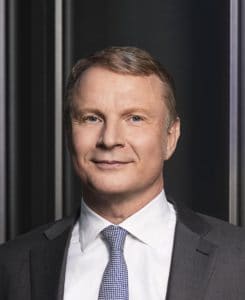
Michael Peters
At a recent roundtable, Deutsche Börse Group derivatives exchange, Eurex, shared its plan to harmonise onto one risk management infrastructure over the next two years.
Speaking to the priorities for the business generally, Michael Peters, chief executive of Eurex Frankfurt AG, asserted that “risk management is top of the agenda for both the trading side and the clearing side.”
Almost a decade ago, back in 2014, Eurex clearing was a leading innovator when it came to real-time risk management. Today, the attention for the next two years is on harmonising onto one risk management infrastructure. Peters specifically highlighted putting Eurex’s MTF and trading pools onto one joint offering which would also likely include European Energy Exchange (EEX) and European Commodity Clearing (ECC) on the commodity side, as well as the repo business.
Matthias Graulich, chief strategy officer at Eurex and global head of fixed income, funding and financing strategy and development at Deutsche Börse Group, expanded on this, explaining: “The intention is to offer all financial products denominated in euro within the same legal, operational and risk management framework.
“In terms of what belongs in this ecosystem are long-term European government bond futures and options (Eurex is in the advanced stages of launching an EU bond future potentially in 2024), euro denominated interest rate swaps, futures and options on short-term Euro interest rates Euribor and €STR, as well as the repo business.”
Currently, Eurex’s offering allows clients to trade repos with more than 160 registered participants and allows participants to raise or place cash against over 13,000 securities, both domestic and international.
Earlier this year, Eurex confirmed that it had seen a significant increase in trading activities and reached record volumes in its cleared repo markets – doubling across all markets year on year as of August 2023.
Speaking at this most recent roundtable, Graulich expanded on the growth of the repo business: “What we have seen is that this business has gotten more and more attractive again because excess liquidity in the market is shrinking as central banks take a step back out of this market.”
The execs also discussed the growth of their pension fund client base amid the changes being seen, emphasising that pension funds are moving into the repo market as they bank on more reliable liquidity in times of market stress.
“We see that pension funds are very interested in cleared repo because they get better rates, it’s operationally quicker, and they have a much broader choice of execution counterparties and ultimately face the CCP, which is also from a credit perspective preferable, said Graulich.
Speaking to this shift in more detail, he added: “The main reason why pension funds were for so long exempted from swaps clearing was the risk that if there was a large interest rate move that they wouldn’t have access to sufficient liquid resources to fund variation margin on the swap side.
“Now one driver for these pension funds to go into the cleared repo market is that this liquidity pool is much more reliable in market stress situations relative to the bilateral repo market. In particular when it comes to market stress liquidity in the cleared market increased whereas it dried up usually in the bilateral market.”
Read more: Eurex lures euro clearing volumes to Europe post-Brexit with new buy-side incentive scheme
Elsewhere, Graulich highlighted that credit index futures are also seeing more appetite from the market and are continuing to progress.
“While these volumes and activities are still small, we see a lot of interest. Clearing brokers are getting ready to support the product and liquidity providers are already engaging in the topic. Additionally, end clients in particular are showing interest also in the credit future side because it’s such an efficient tool to manage risks and take a perspective on credit.”